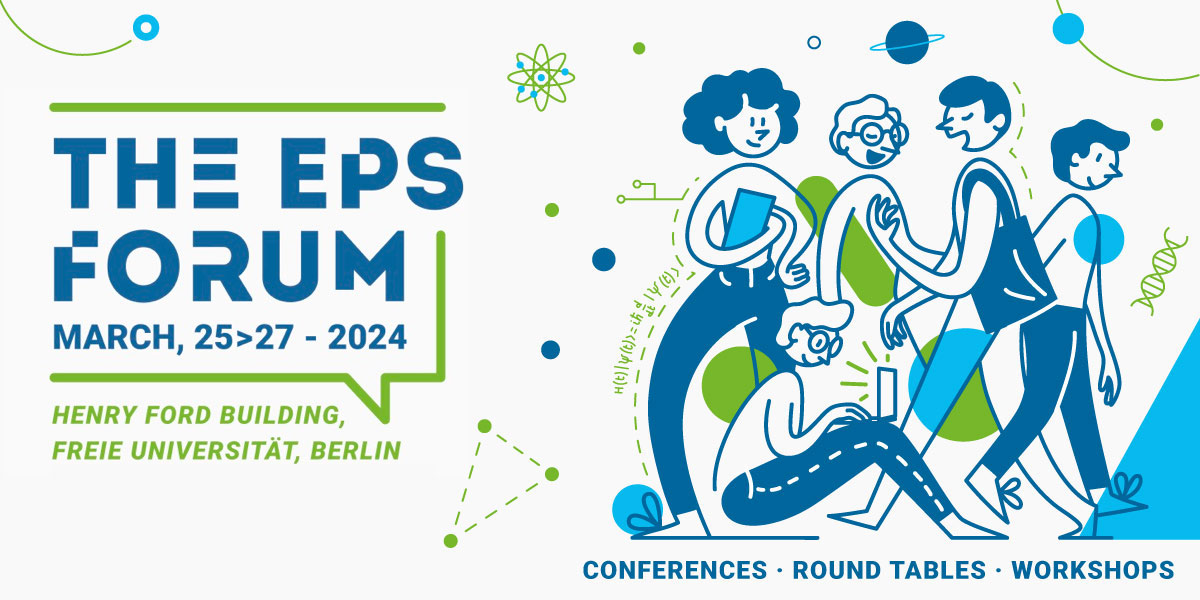
The European Physical Society (EPS) is happy to announce that the second edition of the EPS Forum will take place in the Henry Ford Building of the Freie Universität Berlin (FUB), Germany, from 25th-27th March 2024.
The EPS Forum builds on the success of the first edition held in Paris
in 2022. The EPS joined forces with its 42 National Physical Societies,
18 Divisions and Groups and 40 Associate Members (https://epsforum.org/v1).
After more than a year of preparation by 75 representatives of EPS
members all over Europe and the EPS staff, the first EPS Forum welcomed
487 participants including 184 students from 30 different countries.
The
second edition is expected to gather about 500 participants with a
majority of PhD students, Postdocs and early-career researchers. It will
include presentations and round-table discussions on the following
topics:
· Atomic, molecular and optical physics for quantum technologies
· Applications of nuclear and particle physics to society
· Condensed matter and its applications to industry
· Physical models for energy management, pollution and climate; neuromorphic computing
· Photonics.
The
EPS Forum represents a unique opportunity to interact with both
upcoming physicists and outstanding established researchers including
Nobel Prize and Wolf Prize winners. It will offer a series of scientific
talks bringing together researchers from all over Europe, CEOs and
managers from academic institutions, large research infrastructures,
multi-national companies, SMEs and start-ups involved in the above
fields of research.
The first day, called “Physics meets industry”,
will bring doctoral students and post-doctoral fellows closer to
physics-based companies. It will promote research and technological
developments carried out in the industrial sector and favour direct
exchanges between attendees.
The second day will host a general conference on physics in
the same fields, addressed from a more fundamental perspective and
featuring high-profile scientists from Europe and beyond. Round-table
discussions will also be dedicated to societal issues.
The third day will be devoted to the EPS Council, the Society's annual meeting.
Save the dates! The EPS Form will take place on 25th-26th March 2024 in BERLIN.
Students
The
EPS will once again support the attendance of students by offering a
reduced registration fee and support the travel and lodging expenses of
100 students.
A poster session will be organised to give young physicists the opportunity to present their scientific results.
Organisations and exhibitors
The EPS is convinced that the objectives of the Forum (details at https://epsforum.org),
match a number of organisations' and exhibitors' priorities. To promote
physics-based companies or institutions at the EPS Forum and to
increase their visibility, the EPS offers the following options:
‐ Attend the Forum as an exhibitor on 25th March and/or on 26th March 2024.
‐ Advertise an organisation by choosing a promotional package.
Sponsors
The
EPS offers sponsorship opportunities to support the attendance and
activities of early career researchers at the EPS Forum and to support
the attendance of scientists from Ukraine. These can be tailored to each
sponsor. Contact us for more details at secretariat@eps.org.
The EPS is actively preparing the second EPS Forum and looks forward to welcoming you in Berlin in 2024!
Download the poster of the EPS Forum 2024